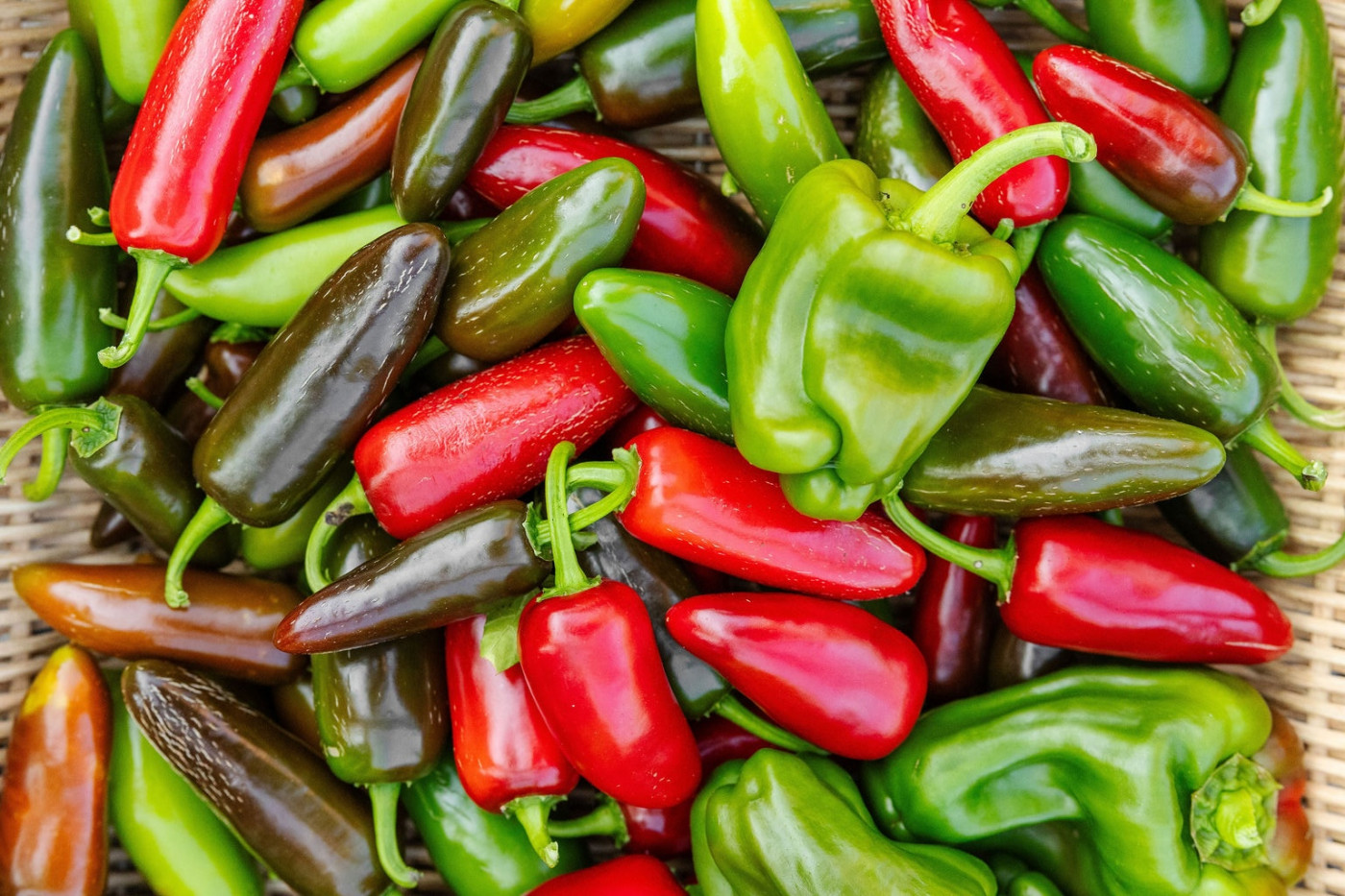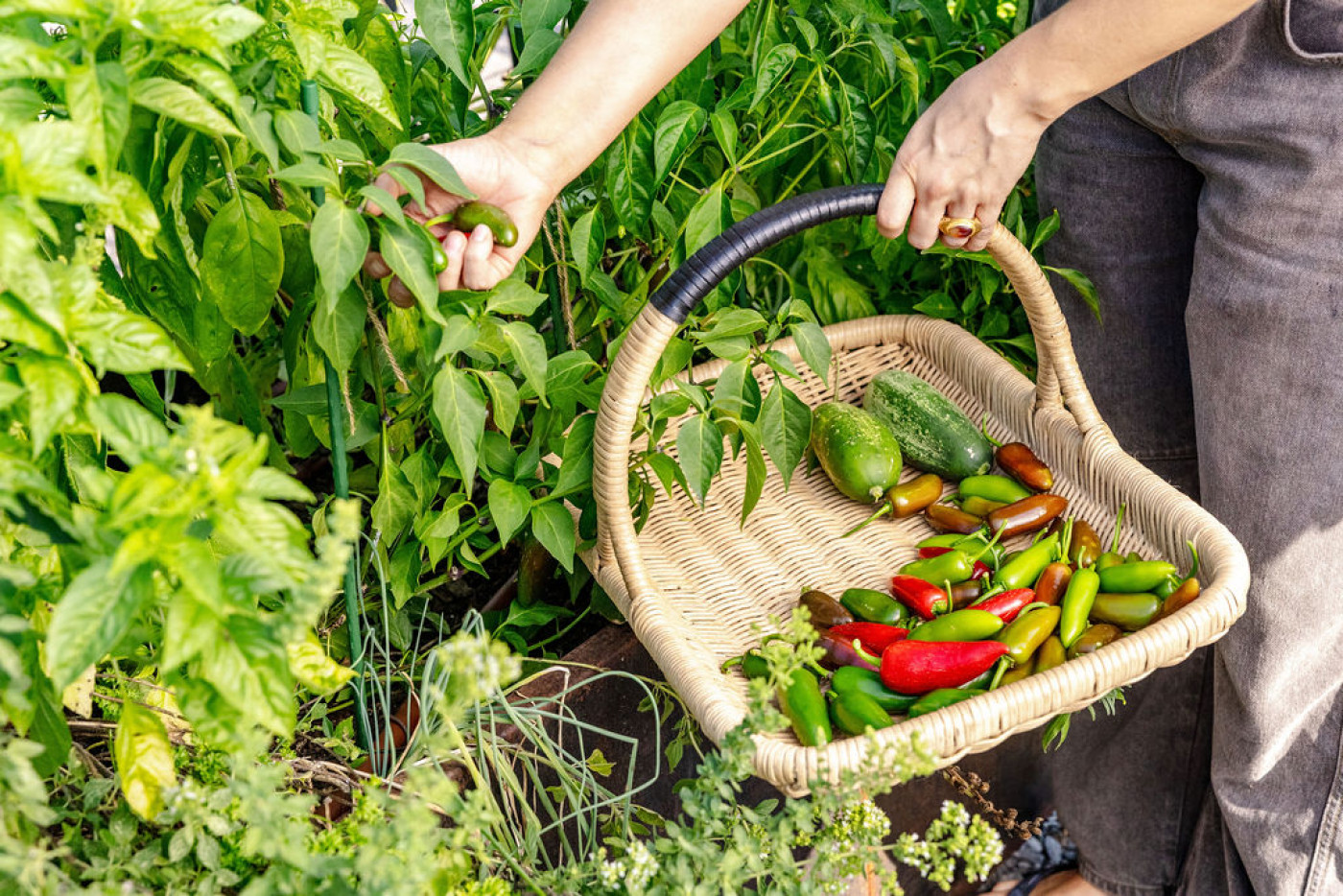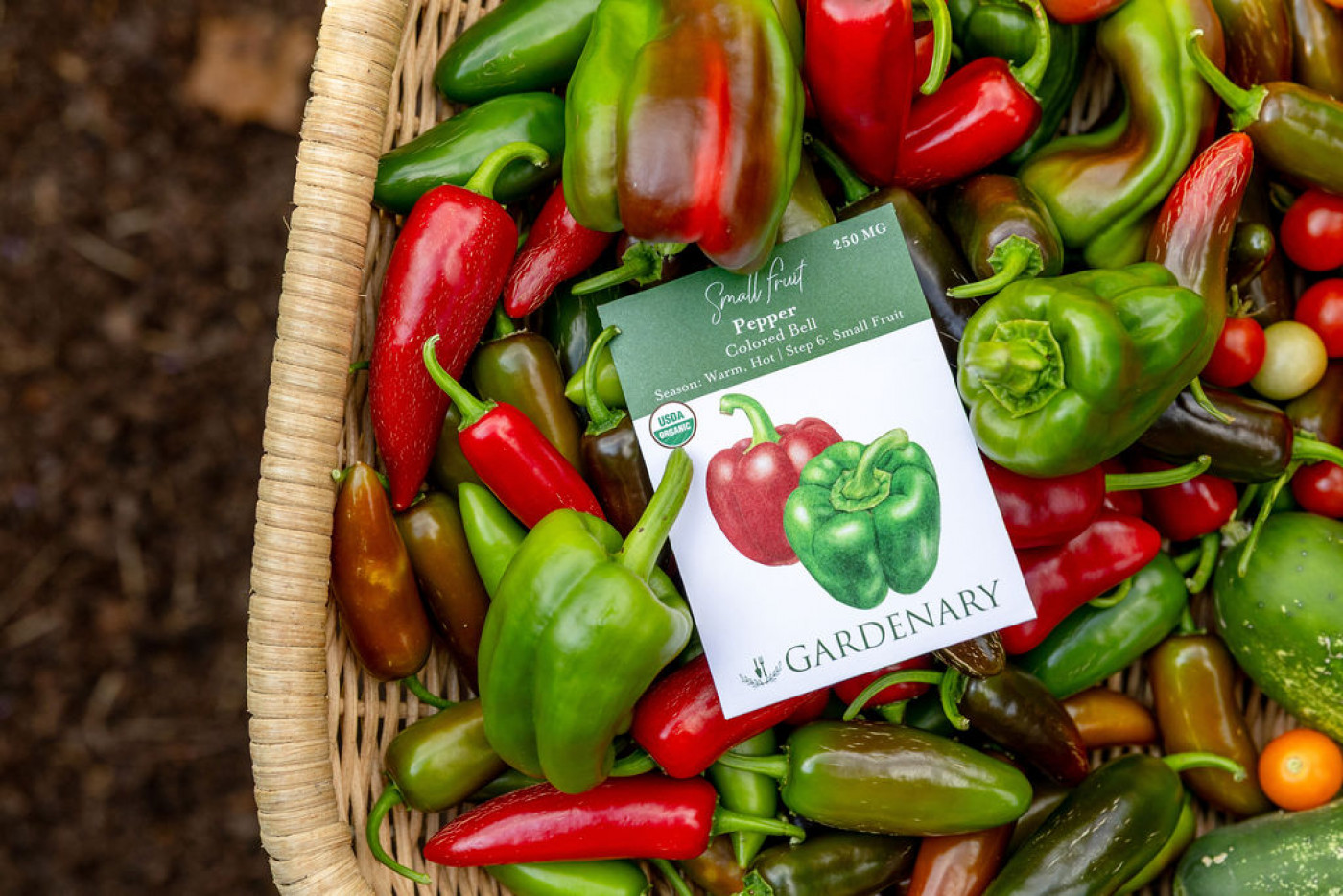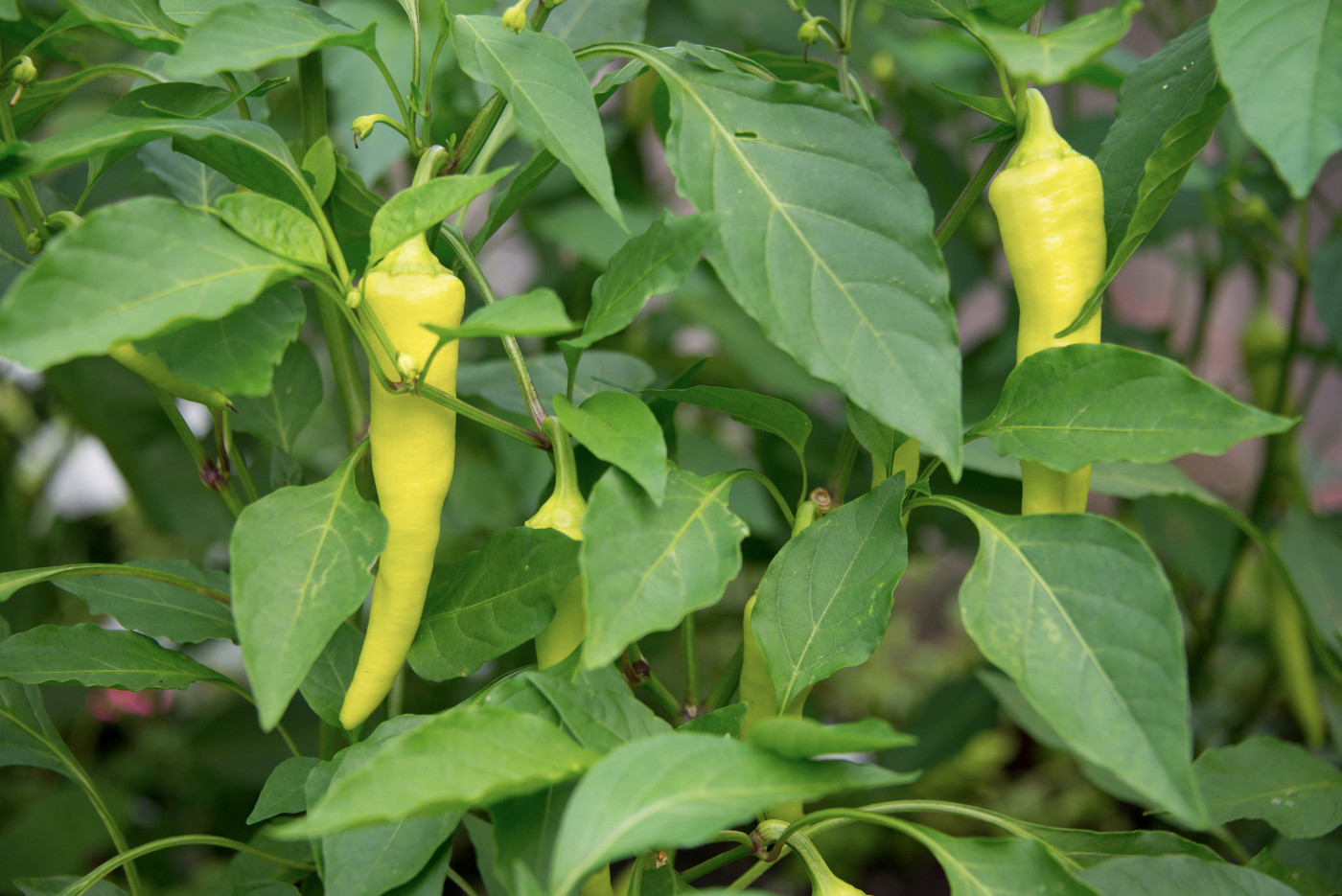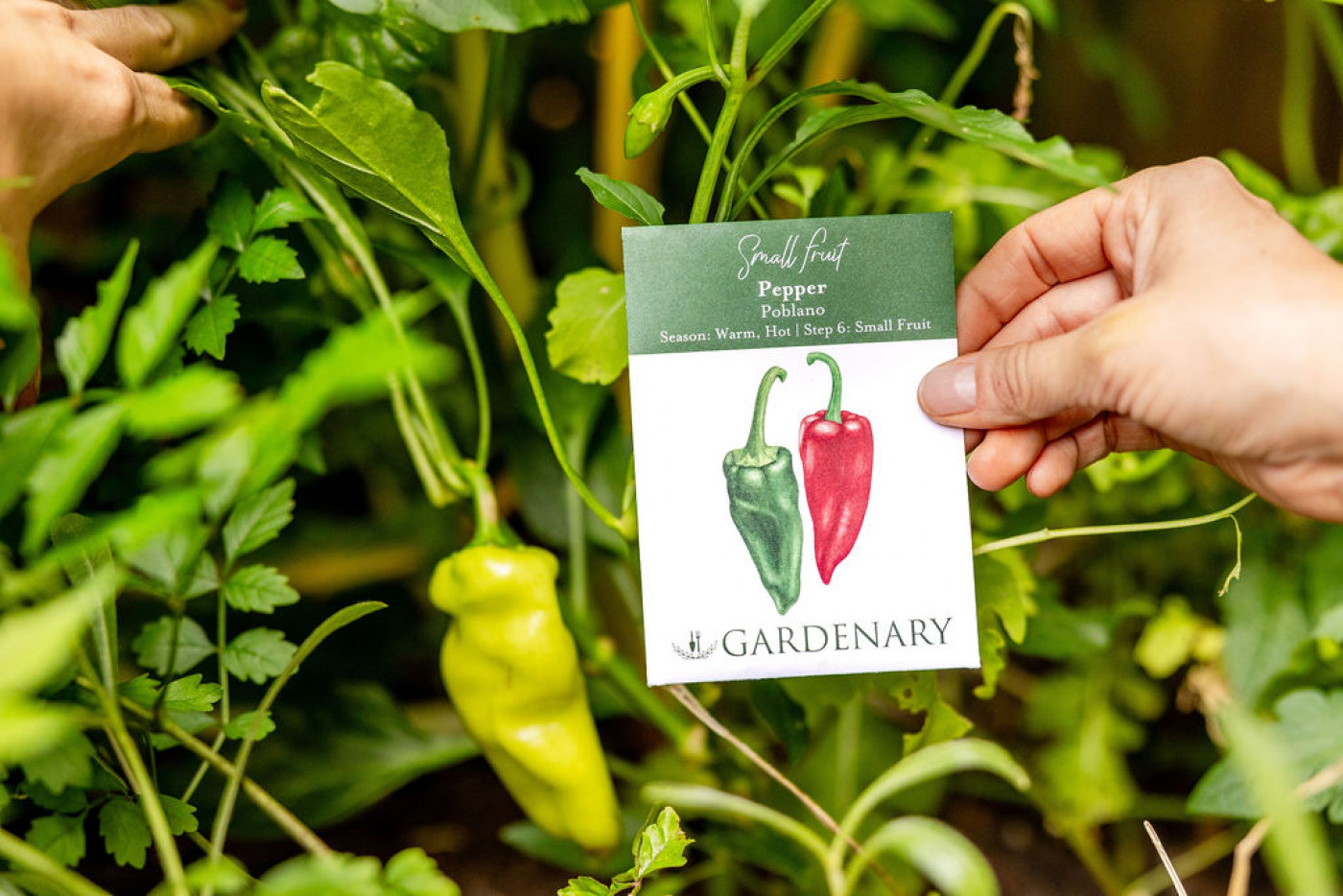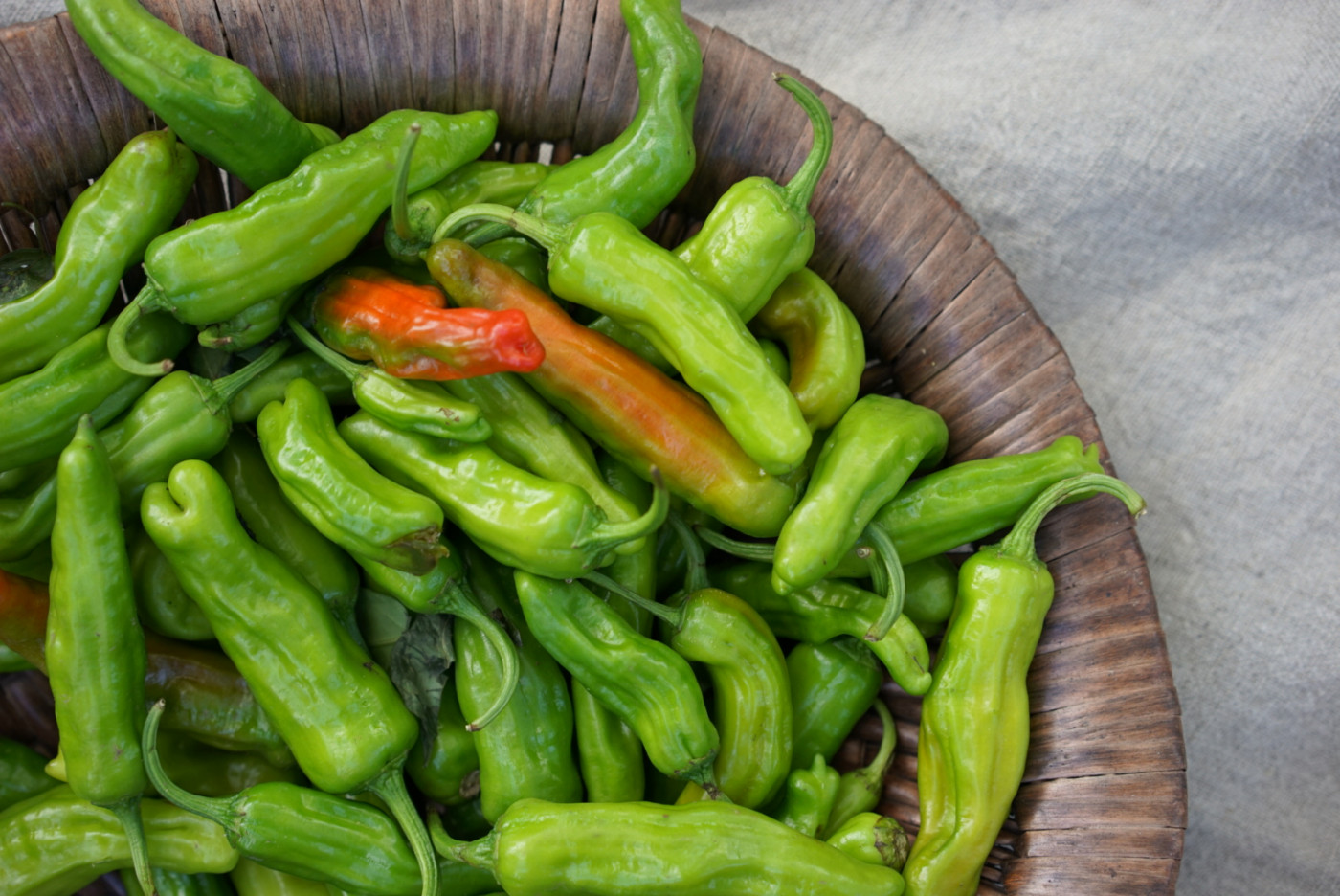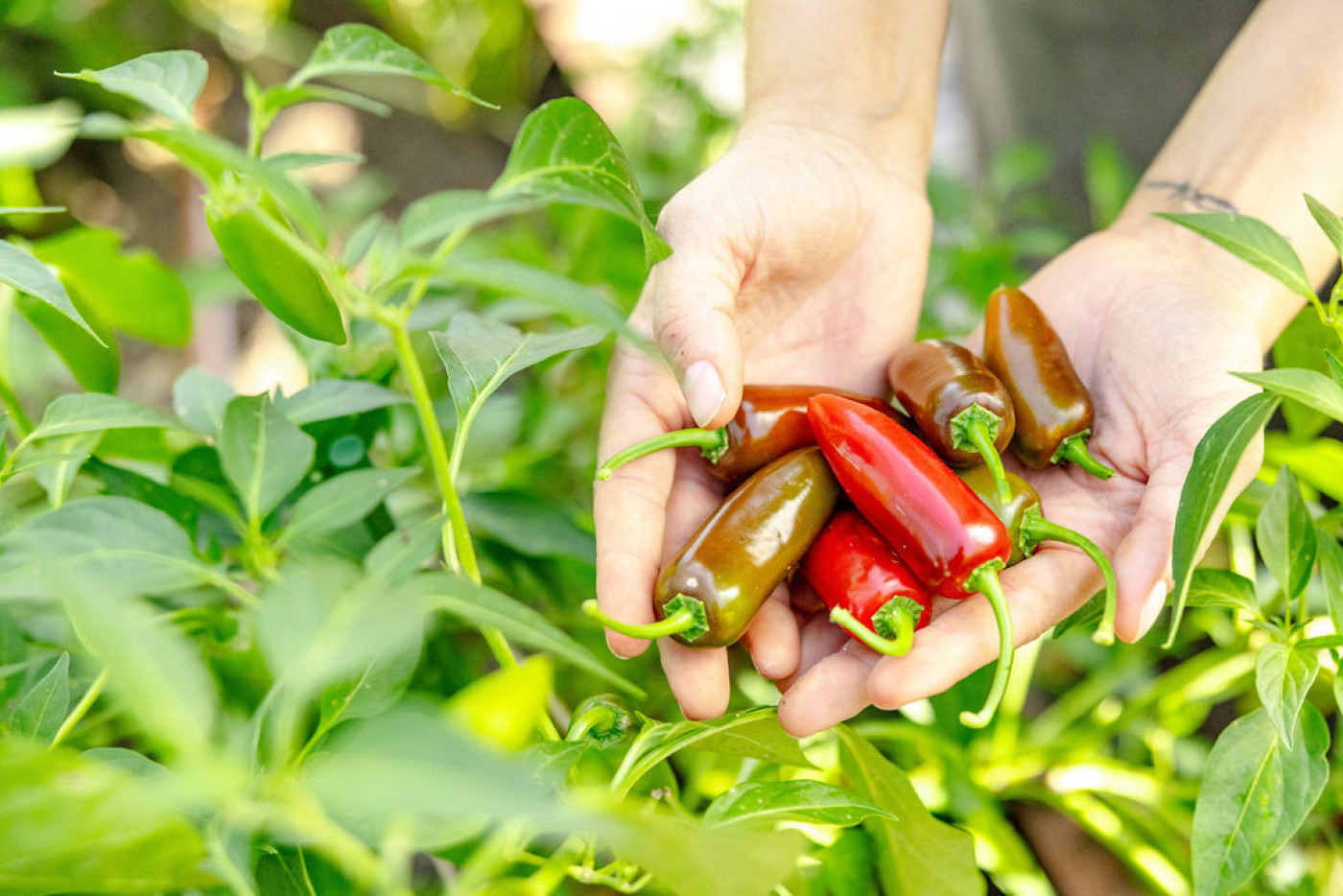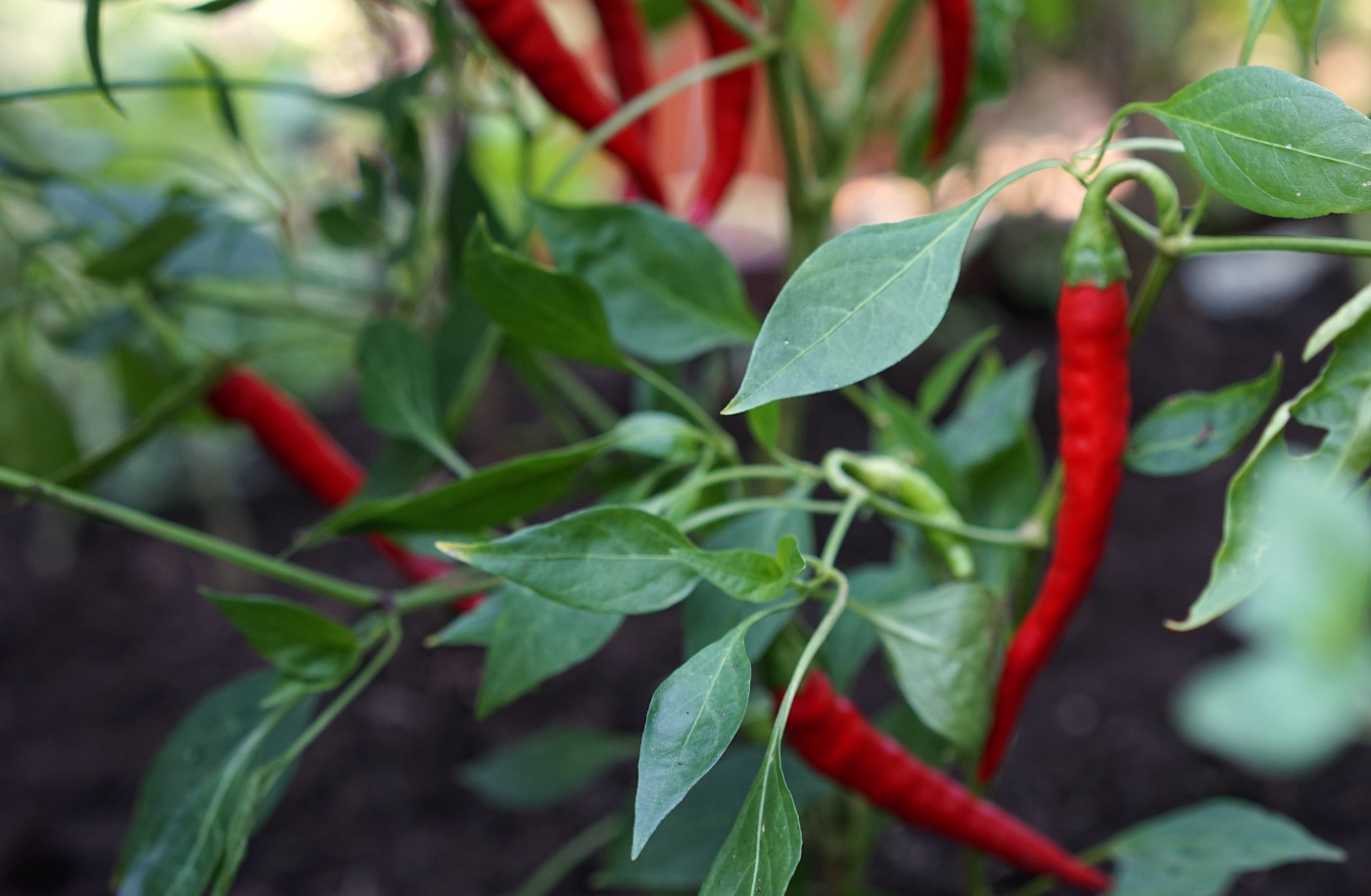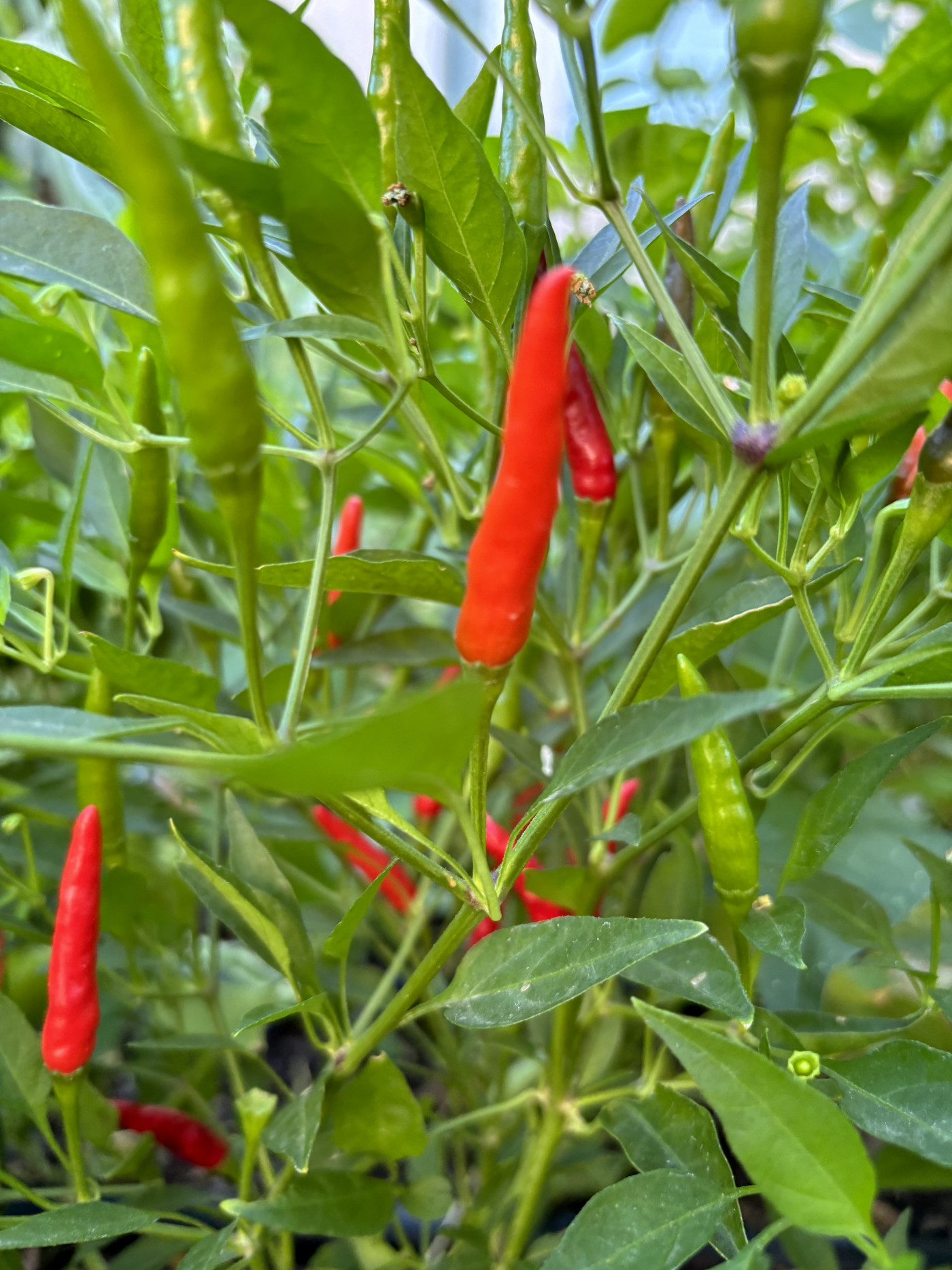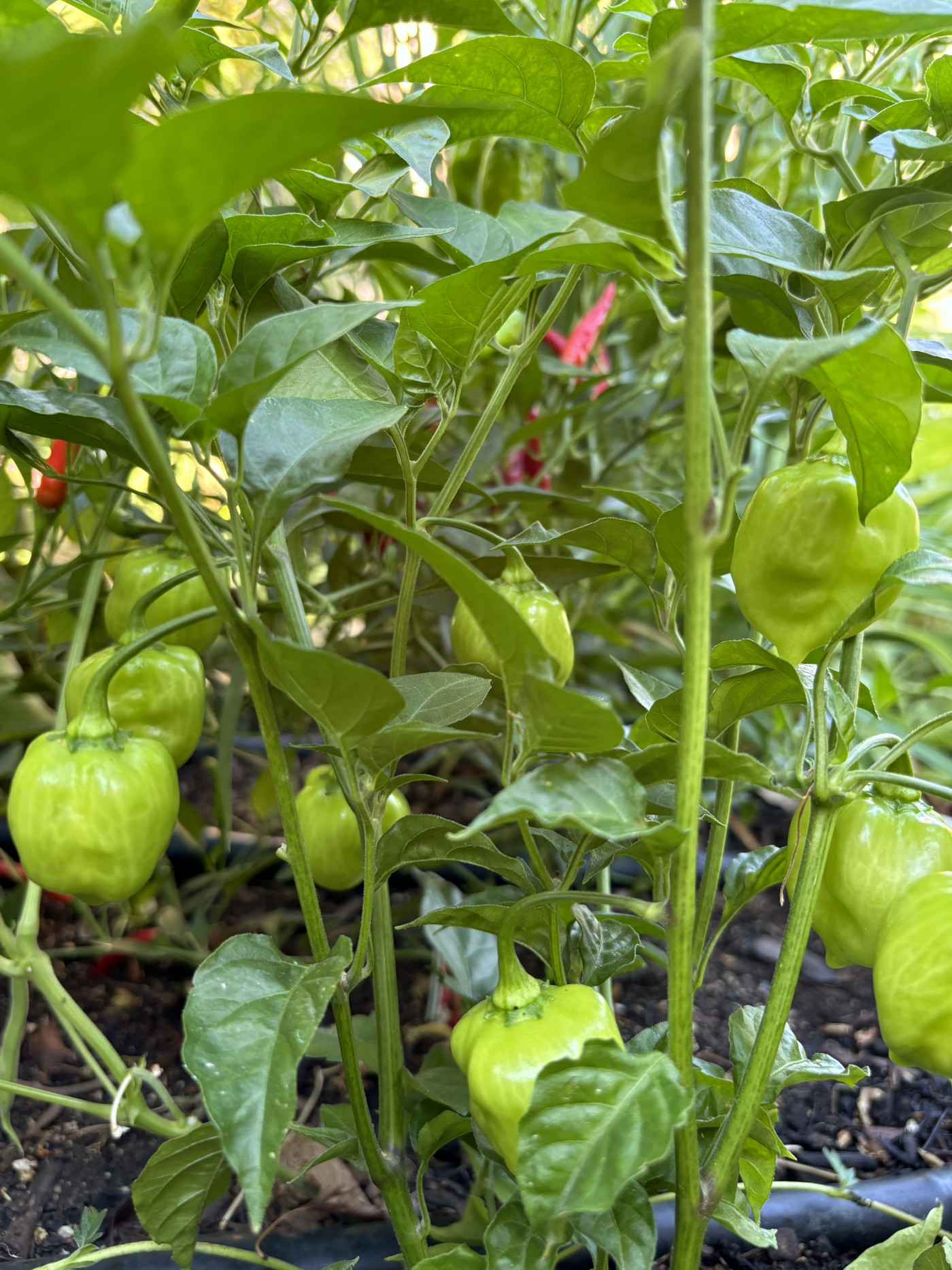Grow These Pepper Types
Peppers are so much fun to grow in the kitchen garden. They don't require a ton of garden space or work, but they give you a big payout. Plus, they can stay in the garden for several seasons. Now that's my kind of plant.
But here's the thing: A lot of people jump straight to bell peppers when they're starting their vegetable garden. Bell peppers are great—don't get me wrong. But they're much harder to grow than almost every other type of pepper.
So here are 15 types of peppers you can grow in your garden instead of bell peppers. I know we all have different spice tolerances, so I've ranked them according to the Scoville Heat Unit scale (SHU). That way, you can find a pepper that's easy to grow and easy to stomach. Let's start with sweet peppers, shall we?
A List of the Best Peppers to Grow at Home
- Jimmy Nardello peppers
- Banana peppers
- Lunchbox peppers
- Peperoncini peppers
- Pimento peppers
- Poblano peppers
- Anaheim peppers
- Shishito peppers
- Biquinho peppers
- Jalapeño peppers
- Serrano peppers
- Cayenne peppers
- Thai hot chili peppers
- Habanero peppers
- Datil peppers
Shop Gardenary's Tomato and Pepper Seed Collection
Our Tomato & Pepper Collection is perfect for gardeners who love bold flavors and beautiful variety. This set includes 6 tomato varieties—from juicy slicers to bite-sized cherries—and 5 pepper varieties ranging from sweet and crisp to delightfully spicy.
Sweet Peppers & Mild Peppers
Peppers are considered sweet or mild as long as they have under 4,000 heat units. Bell peppers are the ultimate sweet pepper. They literally have 0 Scoville units. My 4 favorite sweet peppers to grow have little to no capsaicin, so you can eat them whole (minus the stem, of course).
Sweet peppers grow best when the temps are in the 60s, 70s, and 80s. You may find that your plants will drop their flowers once the temperature spikes over 90°F (32.2°C). In my experience, sweet peppers just don't grow over hot summers quite as well as their hotter counterparts. If you live in a hot climate, your sweet peppers will thrive during your spring and fall seasons.
Let's look at some of the most popular sweet and mild pepper varieties to grow in your garden.
The Best Italian Peppers: Jimmy Nardello Peppers
Scoville Heat Units: 0 to 100
These peppers were brought over from Southern Italy by—you guessed it—the Nardello family. When ripe, these peppers are bright red and glossy and about 10 inches long. The plants are productive and compact, making them ideal for container gardens.
These peppers are super flavorful—sweet with just a hint of smokiness when cooked.
How to Enjoy
- Fry these peppers or just blister them in olive oil and season with salt for simple perfection.
- Peel and puree them to make hummus.
- Slice them up and add them to sandwiches.
The Best Peppers for Snacking: Banana Peppers
Scoville Heat Units: 0 to 500
Banana peppers, perhaps best known for their presence in Greek salads, are sweet with just a little zest. Their skin is smooth and waxy.
Your banana peppers will be about 2 to 3 inches long when they're mature. They're typically harvested while they're still yellowish-green, but you could leave them on the plant to turn orange to red if you'd like.
How to Enjoy
- Pop them in your mouth right off the plant.
- Slice them up and put them on sandwiches or in salads.
- Use them as pizza toppings.
Another great snacking option are lunchbox peppers.
The Best Peppers for Pickling: Peperoncini Peppers
Scoville Heat Units: 100 to 500
These Italian peppers are often pickled to add a sweet tang to Greek and Italian food.
Peperoncinis are typically harvested when they're still yellowy-green and about 2 to 3 inches long. Unlike banana peppers, their skin will be soft and wrinkly.
How to Enjoy
- Pickle them and toss them on pizzas, salads, and sandwiches.
- Add fresh peppers to sauces for pizza or pasta.
The Best Substitutes for Bell Peppers: Pimento Peppers
Scoville Heat Units: 100 to 500
Pimentos are for more than just stuffing green olives. They make a great replacement for bell peppers because they have extra thick and juicy skins. Plus, they're smaller, so they're much easier to grow.
Harvest these heart-shaped peppers when they turn from green to fire-engine red and are about 3 to 4 inches in length.
How to Enjoy
- Cut them up and dip them in hummus.
- Roast them.
- Stuff them like you would a bell pepper.
- Dry them and then ground them to make your own paprika!
- Toss into soups and stews.
Semi-Hot Peppers
Pepper enthusiasts consider anything between 4,000 to 15,000 heat units a medium or semi-hot pepper. I'm going to lower this threshold a bit because most of us aren't out here growing peppers to make the world's hottest hot sauce, right? I know I certainly am not.
These semi-hot peppers do a little better in hot weather than sweet peppers, but you still might consider giving them some shade when temps are above 95°F (35°C).
The Best Peppers for Stuffing: Poblano Peppers
Scoville Heat Units: 1,000 to 2,000
Poblanos are one of the more popular Mexican chile peppers. You may also see the dried version of these peppers referred to as ancho peppers—the main ingredient in mole poblano. Poblanos are wide and somewhat flat, and they have thick walls, which makes them perfect for stuffing. If you're a fan of Mexican food or Tex-Mex, you've likely seen your share of poblanos in the classic dish, chiles rellenos.
Poblano peppers are typically harvested while they're still underripe and dark green, before they turn reddish brown. Each pepper should be about 3 to 6 inches long and 2 inches wide. If you let your peppers mature on the plant, keep in mind they'll be much hotter.
How to Enjoy
- Stuff your peppers with cheese and meat for homemade chili rellenos.
- Grill them.
- Dice them and toss them into your tacos.
Quintessential Green Chili Peppers: Anaheim Peppers
Scoville Heat Units: 500 to 2,500
These peppers were developed by New Mexico State University to have few seeds inside. They're thick walled and have a curved, tapered shaped.
Even though these peppers are on the larger side, the plants are still super productive. Anaheim peppers are typically picked while still green and about 6 inches long. You can leave them to turn that vivid New Mexican red color if you'd prefer.
How to Enjoy
- Roast them.
- Stuff them.
- Make chile relleno.
- Make salsa or green chile.
- Toss them into your chicken tortilla soup.
My Absolute Favorite Peppers: Shishito Peppers
Scoville Heat Units: 100 to 1,000
In my opinion, these Japanese peppers have the perfect amount of heat and a lovely sweet, slightly smokey flavor. Every now and then, you get a rogue shishito that's much hotter than the norm, but even those peppers are considerably less hot than a jalapeño.
Shishito pepper plants are super easy to grow and productive. (Check out this guide to growing your own shishito peppers.)
Shishitos are typically harvested when they're still green or just beginning to turn orange and about 2 to 4 inches long. They have thin, slightly wrinkled skin that makes them great for cooking.
How to Enjoy
- Eat them raw, straight from the garden.
- Grill them.
- Blister them (try tossing them in an air fryer with some EVOO and salt; add some lemon juice at the end). So delicious!
- Roast them and then drizzle some sesame oil and soy sauce.
- Pan fry them.
Shop Gardenary's Shishito Pepper Seeds
Shishito peppers are easy to grow and highly productive. Ideal for gardeners of all experience levels, they thrive in containers or garden beds and are perfect for home gardeners looking to grow their own flavorful, unique peppers. A favorite for stir-fries, roasting, or simply served as an appetizer with a sprinkle of sea salt, these sweet peppers are sure to add a gourmet flair to any dish.
The Tastiest Semi-Hot Peppers for Pickling: Biquinho Peppers
Scoville Heat Units: 1,000 to 2,000
These little Brazilian peppers (pronounced be-KEEN-yo) were such a fun discovery. I don't love how they taste fresh, but if you quick-pickle them, they add this wonderful tartness to your meals.
Each plant produces 100s of these teeny ornament-shaped peppers that aren't even an inch long. They're most flavorful when harvested once they've changed from light green to red, orange, or yellow.
How to Enjoy
- Pickle them and add them to soups, stews, and bean and rice bowls.
- Use them as garnishes—they're so cute!
Gardenary's Warm Season Garden Planner
This beautifully designed planner takes the guesswork out of gardening and helps you stay organized, inspired, and on track during the warmer months.
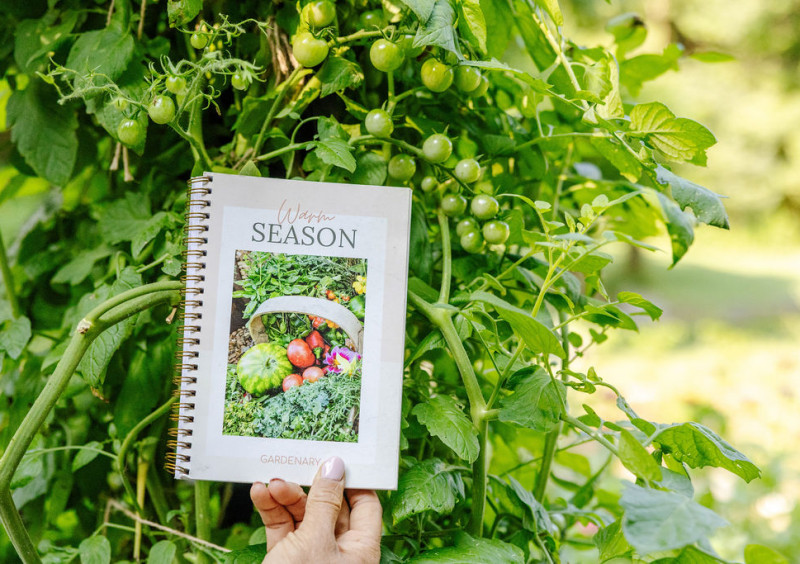
Hot Peppers
All right, we're officially moving into what I consider hot pepper territory. These peppers have more capsaicin, so you might want to avoid eating the seeds and the membranes (you'll also want to wear gloves when you're harvesting and handling them).
These peppers can handle the heat, so they're perfect to grow over the summer if you live in a hot climate. They tend to be smaller in size than sweeter peppers, so you'll get a lot of peppers off each plant.
Now, you won't see any ghost peppers or Carolina Reapers on this list. I don't know about you, but I typically like to be able to eat what I grow. Some of these peppers might even be a little too spicy, but you can always dry them and turn them into delicious crushed red pepper.
The Easiest Peppers to Grow: Jalapeño Peppers
Scoville Heat Units: 2,000 to 5,000
There's a reason these are a popular pepper. Not only are they super tasty and only tolerably hot (be warned though that the ones you grow may be much hotter than their grocery store counterparts), they're also really simple to grow in the kitchen garden. Each plant is prolific, producing dozens of peppers in just one season. (Check out our jalapeño growing guide.)
You can harvest them as soon as they've reached a couple inches in length, when they're still green, or you can leave them to ripen all the way to red for more spice.
If you only want to grow one type of hot pepper, jalapeños are a great place to start.
How to Enjoy
- Stuff them with some cream cheese and wrap them in bacon, then grill them. Warning: jalapeño poppers are addictive.
- Add them to sauces and salsa.
- Make garden-fresh pico de gallo.
- Grill them and eat them with your protein of choice.
The Best Homegrown Peppers for Salsa: Serrano Peppers
Scoville Heat Units: 10,000 to 23,000
Serranos look like smaller, thinner jalapeño peppers, but they're much hotter.
They're typically harvested when they're still green and just a little over 2 inches long.
Serranos have thin walls, which makes them ideal for dicing and tossing into salsas, but not for stuffing.
How to Enjoy
- Make homemade salsa.
- Toss them into a stir fry if you want to turn up the heat.
- Pickle them to keep their flavor but tame their heat.
The Best Peppers for Homemade Crushed Red Pepper: Cayenne Peppers
Scoville Heat Units: 30,000 to 50,000
Cayenne peppers are those pencil-thin, curled peppers you see in Southwestern decor and cuisine.
These plants are super-producers and very attractive. Harvest your cayenne peppers once they're about 4 to 6 inches long and have turned yellow or dark red.
How to Enjoy
- Toss them into a pot of chili.
- Dry them and make red pepper flakes.
- String them up to make your own pepper ristra.
The Best Pepper to Grow in a Container Garden: Thai Hot Chili Peppers
Scoville Heat Units: 50,000 to 100,000
There are actually dozens of varieties of Thai peppers. These thin peppers tend to grow upright on more compact plants, which makes them not only super decorative but also perfect for patio gardens.
How to Enjoy
- Toss into your stir-fry or curry for a (super) spicy kick.
- Make a spicy vinegar.
- Dry them and crush them into flakes.
The Best Hot Hot Pepper to Grow: Habanero Peppers
Scoville Heat Units: 150,000-350,000
Habaneros are lantern-shaped peppers that pack a lot of heat but also add a subtle fruity flavor. Most habaneros are about 2 inches long and ripen to orange, but you can also grow red, white, or brown peppers.
How to Enjoy
- Make homemade salsa or hot sauce.
- Add zest to grilled meats.
- Mix with tropical fruit like mango or pineapple for a flavorful but hot chutney.
Another fun option besides habaneros are datil peppers, which rank between 100,000 and 300,000 for Scoville Heat Units. Datils also have a fruity flavor, and while they're pretty hot, the heat doesn't linger long in your mouth. My friend who's into making hot sauce says that people generally consider his homemade habanero and datil hot sauces as the best.
Whether you prefer sweet peppers, pickled peppers, or super hot peppers, I hope you found something you're excited to grow in this guide!

